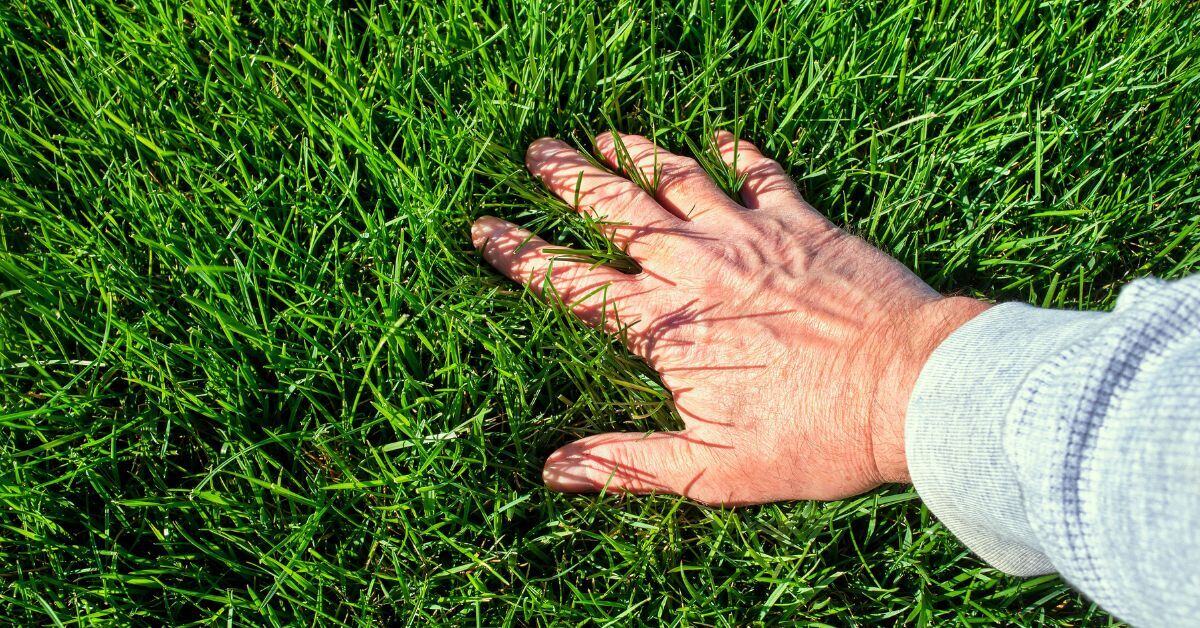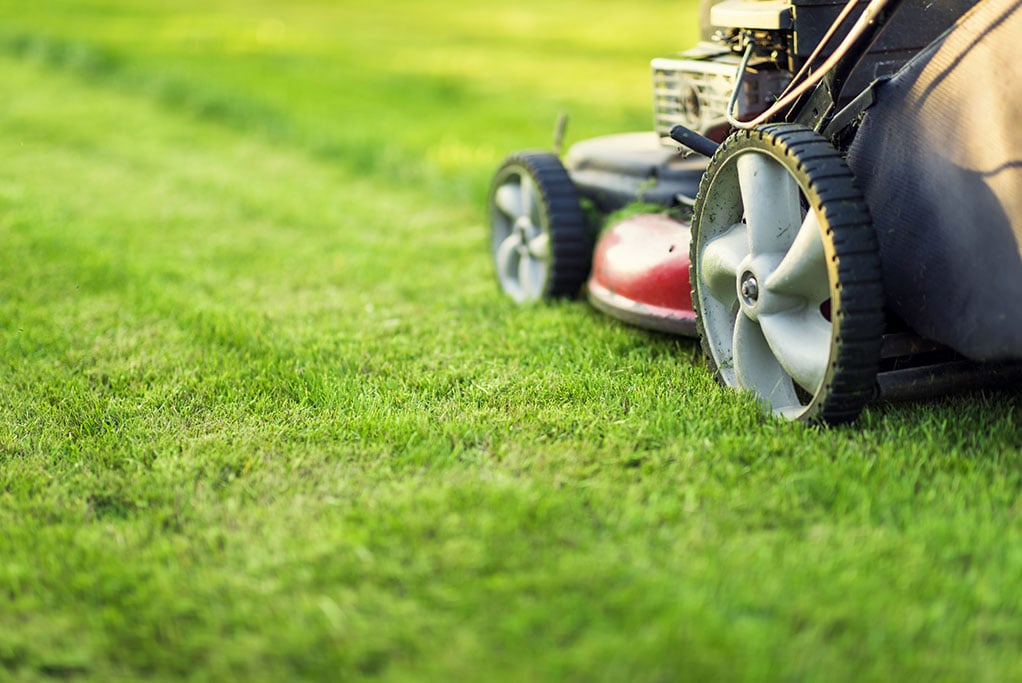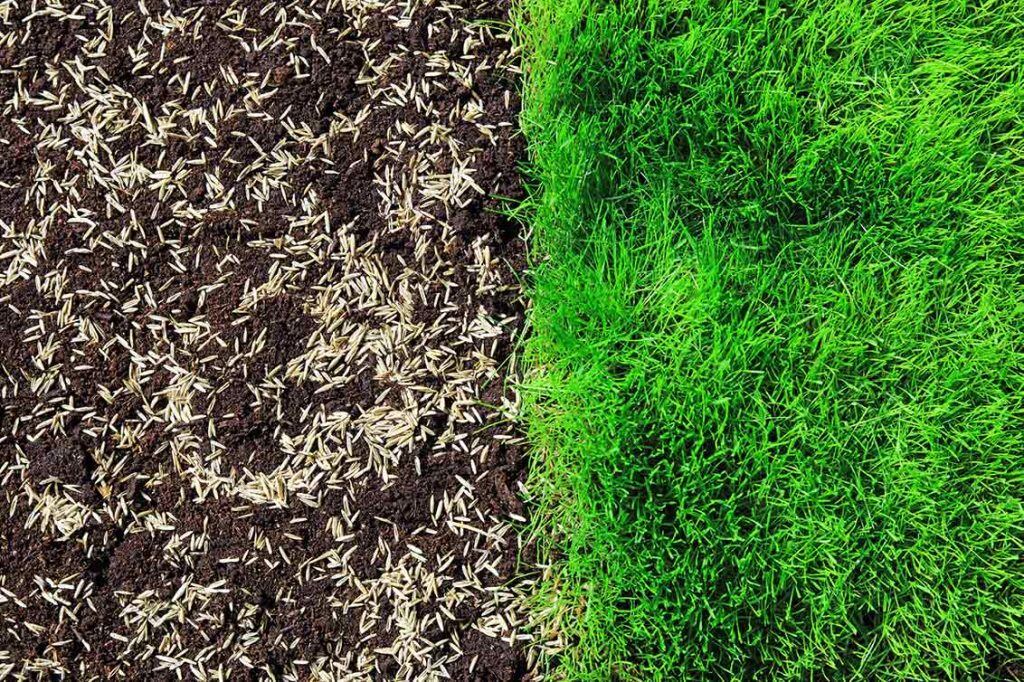Maintaining a lush, green lawn might seem like a daunting task, but with the right tips and tricks, your yard can become the envy of the neighborhood!
Here are some practical and effective strategies to keep your lawn healthy and thriving all year round.
1. Know Your Grass Type

(Photo from KNK Lawn Care)
Before diving into lawn care, it's essential to know what type of grass you're working with. Different grasses thrive in different climates and seasons. For instance, cool-season grasses like Kentucky bluegrass and fescue are best for northern regions, while warm-season grasses like Bermuda and St. Augustine are suited for southern areas. Understanding your grass type helps tailor your lawn care routine to meet its specific needs.
2. Mowing Magic

(Photo from PowerPro Equipment)
Mowing your lawn might seem straightforward, but doing it right can make a significant difference. Here are some mowing tips:
- Keep it high: Set your mower blades to the highest setting. Taller grass shades the soil, reducing water evaporation and preventing weed growth.
- Follow the one-third rule: Never cut more than one-third of the grass blade at a time. Cutting too much can stress the grass and weaken its roots.
- Sharpen your blades: Dull blades tear the grass, making it susceptible to diseases. Sharpen your mower blades at least once a season.
3. Water Wisely
Watering is crucial for a healthy lawn, but it’s important to do it right:
- Early mornings are best: Water your lawn in the early morning when temperatures are cooler. This reduces water loss due to evaporation and allows grass to dry before nightfall, preventing diseases.
- Deep and infrequent: Water your lawn deeply but less frequently. This encourages deep root growth, making your lawn more drought-resistant. Aim for about one inch of water per week, including rainfall.
- Avoid overwatering: Too much water can lead to shallow roots, making your lawn vulnerable to stress and disease.
4. Fertilize for Success

(Photo from Ugaoo)
Fertilizing provides essential nutrients that help your grass grow thick and green. Here are some fertilizing tips:
- Test your soil: Before applying fertilizer, test your soil to understand its nutrient composition and pH level. This helps determine the right type of fertilizer and the correct application rate.
- Follow a schedule: Fertilize your lawn based on your grass type and local climate. Typically, cool-season grasses benefit from fertilization in early spring and fall, while warm-season grasses thrive with summer fertilization.
- Use the right product: Choose a fertilizer that suits your lawn’s needs. Slow-release fertilizers provide a steady nutrient supply, while quick-release options offer immediate benefits.
5. Weed Out the Competition
Weeds compete with your grass for nutrients, water, and sunlight. Here’s how to keep them at bay:
- Healthy lawn, fewer weeds: A thick, healthy lawn is your best defense against weeds. Proper mowing, watering, and fertilizing create an environment where grass can outcompete weeds.
- Pre-emergent herbicides: Apply pre-emergent herbicides in early spring to prevent weed seeds from germinating. This is particularly effective against crabgrass and other annual weeds.
- Spot treatment: For existing weeds, use spot treatments to target specific areas without harming your entire lawn. Hand-pulling can be effective for smaller infestations.
6. Aerate for Airflow

(Photo from The Spruce)
Aeration involves perforating the soil with small holes to allow air, water, and nutrients to penetrate the grass roots. This helps alleviate soil compaction and promotes healthier grass. Here’s how to aerate effectively:
- Timing is key: Aerate your lawn during the growing season when your grass can quickly recover. For cool-season grasses, early spring or fall is ideal, while late spring to early summer works best for warm-season grasses.
- Choose the right tool: Use a core aerator that removes plugs of soil rather than just poking holes. This method is more effective in reducing compaction.
7. Dethatch for Health
Thatch is a layer of organic matter that can build up between the soil and grass blades. While a thin layer is beneficial, too much thatch can hinder water and nutrient absorption. Here’s how to manage it:
- Monitor thatch levels: Check your lawn for excessive thatch buildup, which appears as a spongy layer. If it's more than half an inch thick, it’s time to dethatch.
- Use the right tool: A dethatching rake or power dethatcher can help remove excess thatch. Perform this task during the growing season for best results.
8. Overseed for Density

(Photo from RDS Lawn Care)
Overseeding involves planting new grass seed into an existing lawn to improve its density and overall health. Here’s how to do it:
- Choose the right seed: Select a grass seed that matches your existing lawn and local climate.
- Prepare the soil: Mow your lawn to a shorter height and remove any debris. Use a rake to loosen the top layer of soil, creating a good seedbed.
- Spread and water: Evenly spread the seed and lightly rake it into the soil. Water the area regularly to keep the soil moist until the new grass establishes.
9. Pest Control
Pests can wreak havoc on a healthy lawn. Here’s how to keep them under control:
- Identify the culprits: Regularly inspect your lawn for signs of pest damage, such as brown patches or chewed grass blades. Identifying the specific pest helps in choosing the right treatment.
- Use natural solutions: Beneficial insects, like ladybugs and nematodes, can help control lawn pests naturally. Organic treatments, such as neem oil, are also effective against various pests.
- Chemical treatments: If necessary, use chemical pesticides as a last resort. Follow the instructions carefully to avoid harming your lawn and the environment.
10. Regular Maintenance

(Photo from Green Matters)
Consistency is key to a healthy lawn. Establish a routine that includes regular mowing, watering, fertilizing, and weed control. Keep an eye on your lawn's condition and adjust your care practices as needed to address any issues promptly.
Maintaining a healthy lawn is a rewarding endeavor that enhances your home’s curb appeal and provides a beautiful outdoor space for relaxation and activities. By following these tips, you can transform your lawn into a green paradise that’s the pride of the neighborhood. Happy gardening!
Thank you guys so much for taking the time to read this blog post - we here at Connect truly appreciate it! For all the latest home related blog content, keep your tabs posted on our socials: we get new posts up every Tuesday, Thursday, and Sunday!
Check out these websites as well - they provided us with the inspiration to create this blog post!
Bayscape: https://bayscape.net/lawn-care-tips/
Blooms Land Care: https://www.bloomslandcare.com/top-10-lawn-care-tips-for-a-healthy-lawn-the-secret-to-a-green-lush-and-vibrant-yard/
Toxic Free Future: https://toxicfreefuture.org/healthy-choices/tips-for-a-green-and-healthy-lawn/#:~:text=The%20key%20to%20a%20healthy,microbes%20migrate%20into%20the%20soil.